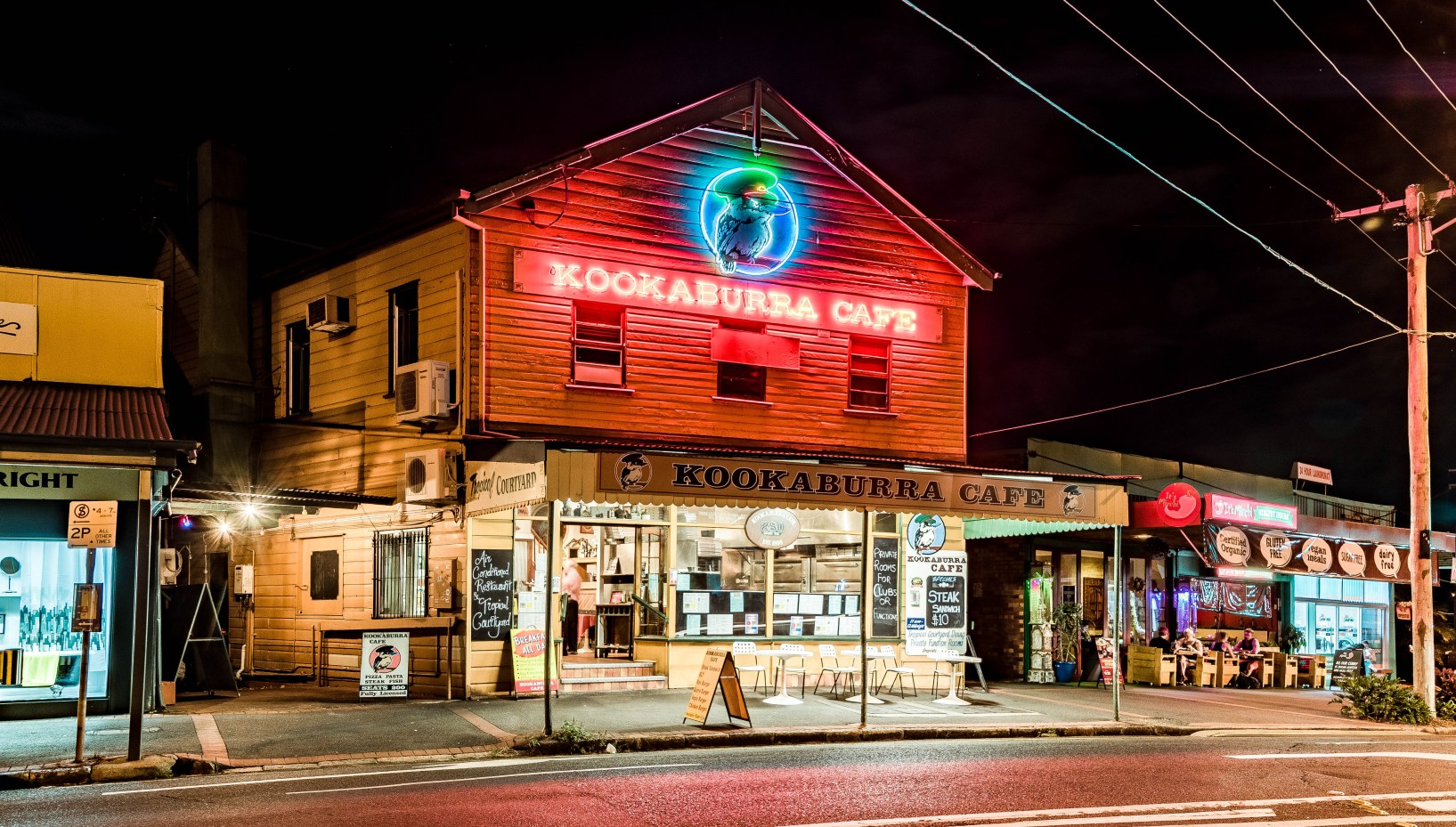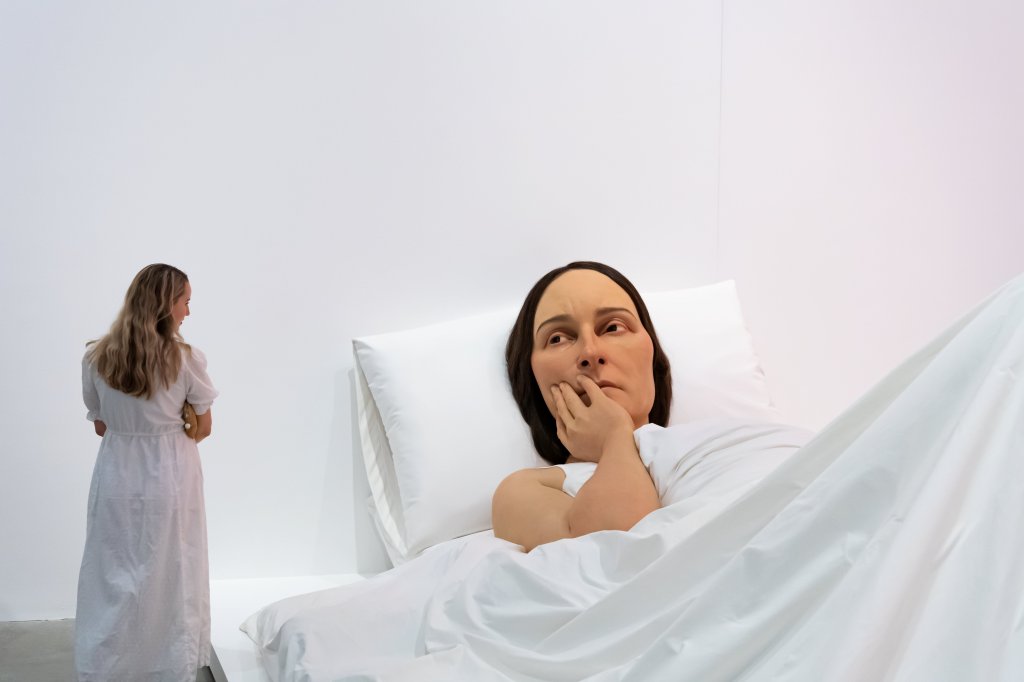Shining a light on the golden age of neon
The age of neon may have dimmed but it is being revived in a nostalgic and fun exhibition of Brisbane cultural markers at the State Library of Queensland.

If you were living in a bachelor pad in Paddington in Brisbane in 1986 and you had no kitchen skills you would most likely have eaten a take-away pizza from the Kookaburra Café.
It’s a hypothetical but one that applies to some of us. That eatery was a lifeline and an icon and it is being remembered at the State Library of Queensland right now in the stunning exhibition Neon, which is on until February 9 in the SLQ Gallery.
And there on the wall is the neon sign that made the Kookaburra Café a beacon every evening when I was a customer. (Yes, that was me living in the bachelor pad, in Plunkett Street, as it happens.)
To me, this is the most exciting show since SLQ did that brilliant exhibition of tea towels. It has the same retro cachet and, like that one, this show is a nostalgia fest.
For those of a certain age, walking in here will trigger a flood of memories. There’s Stefan’s rainbow and Jo-Jo’s café neon signs and the original sketches for them. There’s a replica of the Mr. Fourex sign, made from materials gathered from the old Regatta Hotel, and there are plenty of photographs and some rare footage of our neon history.
One wall features projected images and one, of Queen Street lit up like Broadway, will make you yearn for the days before the Queen Street Mall. Brisbane looked so exciting in neon!
Also in the mix is a sign from The Playroom on the Gold Coast. As a former Gold Coaster, I used to go to gigs there, along with everyone else. Can you remember who you saw at The Playroom? I know I saw Mondo Rock and my favourite reggae band, Toots and the Maytals.
You might like
Another sign that will bring back memories is one for the King of Kings restaurant in Fortitude Valley. Who hasn’t had a yum cha there?
The exhibition gives us a bit of history of neon signs, which are illuminated using electricity passed through neon or argon gas inside sealed glass tubes. Neon signs have become cultural icons.
Neon signs have become cultural icons
“With their long sweeping curves of pure glowing colour and hand-blown glass illuminating text and ever more whimsical designs, neon signs have continued to capture the public’s imagination,” reads one of the exhibition’s didactic panels.
From the 1920s onwards, the fortunes of neon waxed and waned. After a brief final fling in the 1980s, economics and technology combined to slowly bring about neon’s demise. It’s part of the culture, though, and thankfully collectors have kept the neon lights on, to a degree.
One of those collectors is Michael Blazek , a neon master whose company, Neon Signs Australia, had a major role in keeping neon going. He retired last year after decades in the business. From the US originally, he had a neon sign business in Seattle before coming to Australia where he was in business for three decades. He retired with plenty of neon at hand.
“I had to move everything out of my studio,” Blazek tells me as we wander around a section that features many of his works. “My house, my garage and my backyard are full of neon signs, but I wanted them to be seen by the public.
“I worked on the Fourex man at Milton and Scooter Girl, which was on the Valley Pool building’s façade for many years. That one was in storage and almost completely destroyed, but we resurrected it for this show.”
Subscribe for updates
Co-curators for this exhibition are SLQ’s Anna Thurgood and Reuben Hillier. As Hillier explains, having access to Blazek’s collection was a plus.
“As he was closing down his business, he wanted to do something for the benefit of everyone,” Hillier says. “Given their size we couldn’t take his signs into the collection so an exhibition was the next best thing and we had this summer slot.”
Here’s cheers to the Fourex man
Thurgood points out that Blazek’s business archive will be taken into the collection, however, for posterity. As we wander past the Fourex man, Thurgood recalls a visit to the Fourex factory as a student.
“They took us on the tour and gave us a beer afterwards,” she says. “My research says the Fourex man was created by a cartoonist on staff who worked in the advertising area. Ihe was meant to look like one of the directors.”
A beer for schoolkids on an excursion? That wouldn’t happen today for obvious reasons.
The didactic panels in the show give us plenty of information and there are tools from Blazek’s workshop that help explain how neon signs are made, with a bit about glass bending, which is quite the art form.
State Librarian and CEO Vicki McDonald says neon signs “are an evocative part of Queensland’s social history”.
“They have also come to symbolise the march of consumerism in society and the expansion of urban life,” she says. “Both remain the subject of much debate as we continue to consider how we live and what we value.”
A neon sign, created to promote the exhibition, sits on the front of the building, so look up and you will see a neon sign featuring another Brisbane icon, the Ibis … or Bin Chicken. Love it.
Neon continues at the State Library of Queensland, South Bank, until February 9.

